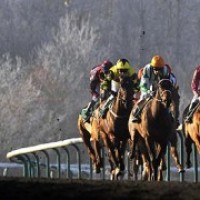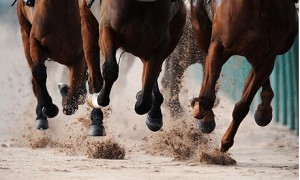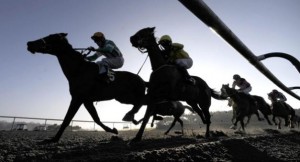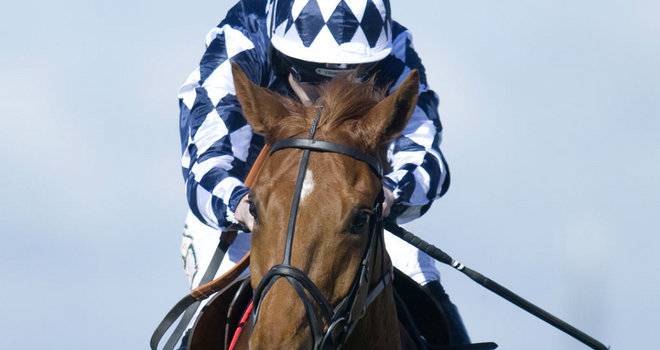 Polytrack, Fibresand, What the hell does it all mean?
Polytrack, Fibresand, What the hell does it all mean?
Now that we are fast approaching the end of the Flat season, I thought it was a good idea to delve slightly deeper and have a poke around the alternative to Flat Turf meetings, All-Weather racing. I know a lot of people don’t actually like all-weather racing for a number of reasons, one used to be the quality of the races as the prize money up for grabs used to be poor in relation to turf meetings. This therefore had a knock on effect in terms of not attracting the better horses and trainers, however over the years this has increased and all-weather meetings are a big part of the winter calendar.
For those who don’t know too much about these types of courses and races, hopefully this post will give you a better idea on how to approach you’re decision making when betting in these races. Firstly though let’s get the basics out of the way so we all know the difference between the courses. Two types of sand are used on these race tracks, Polytrack and Fibresand. All-weather races held at Lingfield, Wolverhampton, Kempton and Great Leighs are now run on a substance called Polytrack. This substance is a form of rubberised sand which minimising the impact of ‘kickback’ – the effect the horses produce as they thunder over a loose-topped sandy surface it also responds to moisture and wears differently.
Polytrack’s consistent nature means that most races can be run at a decent pace, so when having a bet at Lingfield or Wolverhampton it’s worth remembering the importance of backing a horse which will see out the trip. In late 2001, Lingfield replaced their Equitrack surface with Polytrack, which is a wax-coated synthetic riding surface that regains its original shape extremely well after hoof impact. It is also less susceptible to the effects of extreme weather conditions, which we sometime see here in the UK. A similar move took place at Wolverhampton in the autumn of 2004, when the existing Fibresand track was replaced with Polytrack. Southwell has retained a Fibresand surface which was re-laid in 2004 to provide a better consistency across all parts of the track, this material wears more easily than the Polytrack. In general this produces a far more demanding racing surface compared to the Polytrack.
“The pace in all-weather racing may be fast or slow, comparatively speaking, but there is much less of a chaotic sprint at the end of the race”
 If all-weather racing at Wolverhampton and Lingfield is similar to running on the equivalent of fast-ish going on turf, then Southwell’s Fibresand is closer to a turf equivalent of racing on soft or even heavy ground. As different the Polytrack is to turf racing a case can also be made in comparing the Polytrack surface to Fibresand. As a result of which the same horse is quite likely to show a completely different level of ability on the Polytrack compared with its effectiveness on Fibresand. A horse’s recent form needs to be assessed in relation to these particular terms.
If all-weather racing at Wolverhampton and Lingfield is similar to running on the equivalent of fast-ish going on turf, then Southwell’s Fibresand is closer to a turf equivalent of racing on soft or even heavy ground. As different the Polytrack is to turf racing a case can also be made in comparing the Polytrack surface to Fibresand. As a result of which the same horse is quite likely to show a completely different level of ability on the Polytrack compared with its effectiveness on Fibresand. A horse’s recent form needs to be assessed in relation to these particular terms.
This is a really important factor to take into account when a horse has performed well at Wolverhampton or Lingfield and is then entered to compete at Southwell. Even if the race distance is the same it pays to convince yourself the horse will see out the trip on this different surface before placing any bets. The flip side of this being that if you’re looking at the possibility of Laying at Southwell then this can be a added selection method to qualifying a selection.
“Speed is an important factor on the all-weather”
Speed or Pace, in all-weather racing is vitally important. Compared to the majority of turf racing where the pace builds up steadily until the final two furlongs or so when the leading contenders all start to sprint for the line at approximately the same time, or that’s the general idea anyway. In all-weather racing on the other hand the pace is much more uniformed throughout the contest.
 The pace of the race can make a huge difference in all-weather racing; this allows horses from the back of the field usually with good stamina form on soft ground to suddenly surge forward towards the line, normally from an outside position to claim victory. Some sprint horses with a good turn of foot on turf can often be found to take longer to get into top gear or find their ability to sprint on in the final furlong greatly limited due to having to handle the softer artificial surface. For those betting in-play may find this a good opportunity to watch out for any outside running horses.
The pace of the race can make a huge difference in all-weather racing; this allows horses from the back of the field usually with good stamina form on soft ground to suddenly surge forward towards the line, normally from an outside position to claim victory. Some sprint horses with a good turn of foot on turf can often be found to take longer to get into top gear or find their ability to sprint on in the final furlong greatly limited due to having to handle the softer artificial surface. For those betting in-play may find this a good opportunity to watch out for any outside running horses.
Here are a few rules to abide by;
 1: Examine only winner’s last time out running within approximately 21 days of their previous outing. In their latest run, potential selections should have recorded their fastest speed figures for some time.
1: Examine only winner’s last time out running within approximately 21 days of their previous outing. In their latest run, potential selections should have recorded their fastest speed figures for some time.
2: Weight counts for very little on the all-weather even in handicaps.
3: There should be a minimum standard speed figures to qualify a selection. So if the highest rating of the best all-weather horse is in the 100 zone, then any horse recording a speed figure of 85 would be worth considering if that figure of 85 is the best for some time.
4: To qualify, a selection does not need to have the highest speed figure in the race under review, but its figure should be at least within five percent of the top rated speed horse in the race. Therefore if the best speed figure in the race is 95, it must have recorded at least a figure of 95 minus (95 x 5/100) = 4.75 points, that is, a figure of 90.25 so just round this number up or down to the nearest point. So in this case we would be looking for a top speed figure of 90.
5: The other highly significant factor in all-weather racing is the draw. On some tuft courses the draw is obviously important too, but on the all-weather at Lingfield, Wolverhampton and Southwell, the draw generally has a huge effect on race results. Like all rules there are exceptions, however you should make sure any potential selection on the all-weather has a favourable draw that will give it an advantage over at least some, if not the majority of the competition.
6: The final part of the speed figures system for the all-weather is to restrict bets to horses which are well drawn according to the following specifications for each of the three tracks: Please note I’ve left out Kempton and Great Leigh’s as I prefer to stick to these courses.
Wolverhampton;
1: Bet only in races with 11 or more runners.
2: Bet only in races of from 5 furlongs to 1 mile and 1 and a half furlongs inclusive.
3: Bet only if a speed horse identified above as a potential selection is one of the six highest drawn horses in the race.
Lingfield;
1: Bet only in races with 11 or more runners.
2: Bet only in races of from 5-10 furlongs inclusive.
3: Bet only if a speed horse identified above as a potential selection is one of the four lowest drawn horses in the race.
Southwell;
1: Bet only in races with 11 or more runners.
2: Bet only in races of from 6 furlongs to 1 mile.
3: Bet only if a speed horse identified above as a potential selection is one of the four lowest drawn horses in the race
I’m fully intending to have this type of system fully automated as a future update to the FL Software as well as a host of other benefits. Using the FL Software will help you to quickly narrow down your all-weather selections before running through these additional checks.
Speed Ratings for the day can be found below.
Have a great weekend
BSG
Reference – andy michael,david duncan winning horse racing formulae,david-lee priest against the odds.





Hi BSG, many thanks for the tips you’ve taken time to lay out for the punters. I believe it will be most helpful if heeded. However, I do not know how to check for a horse’s speed. Please can you write me to explain how to do this?? Thanks, I will be expecting your prompt response in this matter, have a good day.
I got a winner last night at Wolv..with your system and was unlucky to get second with another..
Hey Gary, nice one, glad to see my articles and free resources are being used 🙂
Hello,
Because I’m new in horse racing,please,tell me which are considered ”the six highest drawn horses” and ”the four lowest drawn horses”.Thank you very much!
Albert
Just did the last race at Wolves with win places on Dream of fortune Striding Edge and Cape Quarter in addition I use Patternform which showed Bakongo as running in a class 3 race at Wolves in May, so added it in for the tricast which paid £220.27. to a £1
Afraid I only had .10p but made a profit.
I have in the past looked at the top RP Rated and also used a system by subtracting the OR from the TS Ratings with some success.
Thanks for the food for thought and must look at the stats for the Draw bias
Tim
Hi Tim, thanks for the comments it’s really good to hear that it’s working, keep up the good work and you’ll have a profitable winter campaign on the A.W.
It’s a pity the blog comes with a black background with (almost) white lettering. I’m sure the content is very useful but it would be a lot more useful if it was readable!
Try viewing it in firefox but I will get someone to have a look at the other platforms and see what’s up with it.
This is just what i have been waiting for, hope the software is as good as the above post.
Barry
Hey Barry, thanks for the comments, we are going to be implementing this into the future version of the software, and we are currently creating a silverlight version, I’m glad you like the post so please go ahead and use the content to have a good winter on the AW. Thanks
This a great post and read.i been looking around to see if ther was any speed software for the a/w,
Hey Stephen, glad you enjoyed it, please use it, the manual calcs don’t take that long. Thanks
I hope that this is the “real deal,”and I hope to return with some positive comments
after I have tested it out tha method(s), this weekend.
Go ahead and use it Jay and you will have a pretty decent winter on the AW. Thanks BSG